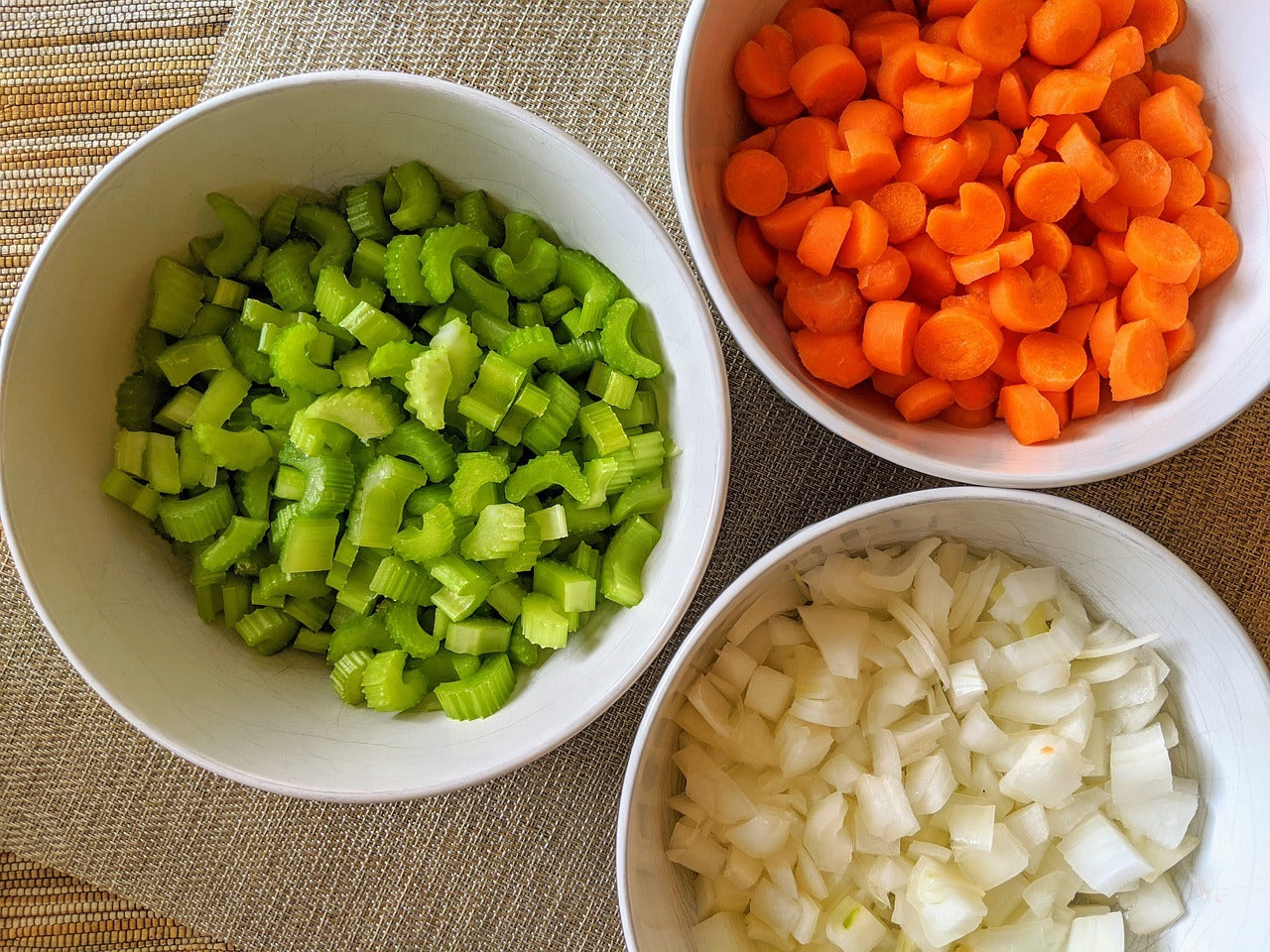
Mirepoix: Creating a Flavorful Foundation
by Maddie AugustinMirepoix is a pervasive and powerful foundation to many countless recipes, Often referred to as “The Holy Trinity,” this aromatic blend of vegetables forms the backbone of countless dishes in various cuisines around the world. From French cuisine to Italian and beyond, mirepoix is the secret ingredient that adds depth, complexity, and an irresistible aroma to your favorite recipes.
What is Mirepoix?
Mirepoix (pronounced "meer-pwah") is a classic flavor base composed of three simple ingredients: onions, carrots, and celery. Traditionally, these three vegetables are diced into small, uniform pieces and sautéed in a bit of fat, such as butter or oil until softened. The exact proportions can vary, but the most common ratio is two parts onion, one part carrot, and one part celery. However, different regional variations may feature additional vegetables or herbs to reflect local produce.
The Origins
The origins of mirepoix can be traced back to 18th-century France, where it was developed by the cook of Charles-Pierre-Gaston François de Lévis, Duke of Lévis-Mirepoix. It is believed that mirepoix was popularized by the renowned French chef Auguste Escoffier, who recognized its ability to enhance the flavors of dishes across the culinary spectrum.
Culinary Applications
Mirepoix serves as the flavor foundation for numerous dishes, acting as a building block for stocks, soups, stews, sauces, and braises. The sautéing process releases the natural sugars and aromatic compounds present in the vegetables, creating a savory and fragrant base that adds depth to any recipe.
In French cuisine, mirepoix is a key component in classics like coq au vin, beef bourguignon, and pot-au-feu. In Italian cuisine, a similar mixture called soffritto, which includes onions, carrots, and celery, forms the base for iconic dishes such as ragù, risotto, and minestrone soup.
Variations
While the classic mirepoix trio of onions, carrots, and celery forms the foundation of countless recipes, there are countless variations found around the world. Some popular variations include:
Cajun Trinity: A staple in Cajun and Creole cooking, the Cajun Trinity substitutes bell peppers for carrots, resulting in a blend of onions, bell peppers, and celery. This aromatic trio adds a unique and vibrant flavor to dishes like gumbo, jambalaya, and étouffée.
Spanish Sofrito: In Spanish cuisine, sofrito is a combination of onions, tomatoes, garlic, and sometimes peppers or herbs. This robust blend is the starting point for many Spanish dishes, including paella and sauces.
Whatever you’re cooking, mirepoix and its variations provide a flavorful foundation for countless dishes. Whether you're preparing a rich and comforting stew or a delicate sauce, let its aromatic magic elevate your dishes.
Ingredients
- 2 parts onions
- 1 part carrots
- 1 part celery
- Butter or oil for sautéing
Instructions
Prepare the vegetables: Peel and dice the onions, carrots, and celery into small, uniform pieces. It's important to dice them evenly to ensure even cooking and flavor distribution.
Heat the fat: In a large skillet or sauté pan, melt a knob of butter or heat some oil over medium-low heat.
Cook the vegetables: Add the vegetables to your pan and cook until translucent and softened, about 10 minutes. Note: this time will vary depending on the size of your vegetables.
Use as desired: Your mirepoix is now ready to be used as the flavor base for a wide range of recipes. Add it to stocks, soups, stews, sauces, or any dish that calls for a savory and aromatic foundation.
